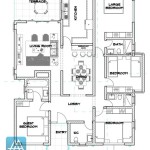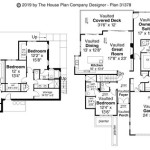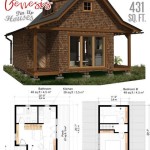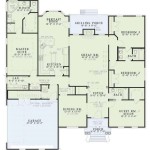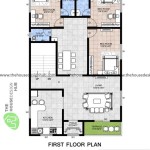How to Find a Floor Plan of Your House
Locating a floor plan for a house can be crucial for a variety of reasons. Whether for renovation projects, insurance purposes, interior design planning, or simply understanding the property layout, having access to a detailed floor plan provides significant benefits. However, finding these plans isn't always straightforward. This article outlines various methods and resources available to assist in obtaining a floor plan for a house.
Checking Existing Records and Documents
The first and often easiest step is to thoroughly search through any existing records related to the property. These records may already contain a floor plan, saving significant time and effort. Consider these potential sources:
Closing Documents: When purchasing a property, a substantial amount of paperwork is generated. This package often includes the deed, mortgage documents, and property disclosures. These documents may contain a copy of the original floor plan, particularly if the house was newly built at the time of purchase. Carefully review all sections of the closing documents, paying close attention to any attachments or exhibits.
Home Inspection Reports: A home inspection is typically conducted before finalizing a real estate transaction. While the primary focus of the inspection is on the structural integrity and condition of the property, some inspectors may include a basic floor plan as part of their report. Although it may not be a highly detailed architectural drawing, it can provide a general overview of the layout and dimensions of the rooms.
Mortgage Appraisal: During the mortgage approval process, an appraisal is usually required to determine the fair market value of the property. The appraiser may have created a floor plan as part of their valuation process. Contact the lender or review any documents received during the mortgage application period to check for a floor plan.
Previous Renovation Permits: If the house has undergone any renovations or additions in the past, permits would have been required from the local building department. These permit applications often include detailed floor plans showing the proposed changes. Reviewing these records can provide valuable insights into the original floor plan, as well as any modifications that have been made over time.
Original Construction Documents: If the house is relatively new or part of a planned community, the developer or builder may have retained copies of the original construction documents. Contacting the builder or developer, if still in business, may be a viable option to obtain a floor plan. They may also have additional documentation, such as specifications and elevations, that can be helpful.
Homeowner's Insurance Policy: While not always the case, some homeowner's insurance policies may include a basic property sketch or floor plan as part of the policy documentation. This is often used to determine coverage limits and assess potential risks. Check the policy documents or contact the insurance provider to inquire about the availability of a floor plan.
Exploring Public Records and Local Government Agencies
If personal records do not yield a floor plan, exploring public records and contacting local government agencies is the next logical step. These entities often maintain records that can be accessed by the public, though availability and accessibility may vary depending on the location.
City or County Building Department: The local building department, also known as the planning department or permit office, is often the best resource for obtaining floor plans. These departments are responsible for issuing building permits and maintaining records of construction projects. Submit a request to review the property's file, which may contain original blueprints, renovation permits, and other relevant documents. Be prepared to provide the property address and potentially the parcel number. Some jurisdictions offer online access to permit records, allowing for convenient searching from home.
County Assessor's Office: The county assessor's office is primarily responsible for assessing property values for tax purposes. While they may not have detailed architectural floor plans, they often maintain records that include property sketches. These sketches typically show the outline of the house, the dimensions of the rooms, and the overall square footage. This information can be a helpful starting point for recreating a more detailed floor plan.
Local Historical Societies: For older homes, local historical societies or archives may hold historical records, including architectural drawings, photographs, and other documents related to the property. These organizations often preserve building plans and other historical materials that may not be available elsewhere. Contacting local historical societies can be particularly helpful for homes located in historic districts or those with significant architectural value.
Online Property Records: Many counties and municipalities now offer online access to property records through their websites. These online databases may include property information, tax records, and scanned images of various documents, including building permits and maps. Search for the property address or parcel number to see if any relevant documents are available online. Keep in mind that the level of detail and the availability of online records can vary significantly depending on the jurisdiction.
Fire Department: In some rare cases, the local fire department may have floor plans of buildings, particularly commercial properties, for emergency response purposes. This is less common for residential properties, but it may be worth inquiring, especially if the house is located in a densely populated area or has unique features.
Creating Your Own Floor Plan
If existing records and public resources fail to provide a floor plan, the final option is to create one manually or with the assistance of professional tools. This requires careful measurement and attention to detail, but it can be an effective way to obtain an accurate representation of the house's layout.
Manual Measurement and Sketching: The most basic method involves manually measuring each room and sketching the layout on paper. Use a measuring tape to determine the length and width of each wall, as well as the dimensions of doors, windows, and other architectural features. Create a rough sketch of each room, noting the measurements. Use graph paper to create a more accurate representation of the floor plan. Ensure that all measurements are consistent and that the proportions are correct. This method is suitable for simple floor plans but can become challenging for complex layouts.
Using Floor Plan Software: There are numerous software programs available that can assist in creating floor plans. These programs range from simple, user-friendly applications to more advanced architectural design tools. Some popular options include RoomSketcher, Floorplanner, and SmartDraw. These programs allow users to create floor plans by dragging and dropping walls, doors, windows, and other objects. They also offer features such as 3D visualization, furniture placement, and measurement tools. Using floor plan software can significantly streamline the process and produce a professional-looking result.
Hiring a Professional: If accuracy is paramount or the house has a complex layout, consider hiring a professional architect, draftsman, or interior designer to create a floor plan. These professionals have the expertise and tools necessary to produce detailed and accurate drawings. They will visit the property, take measurements, and create a floor plan based on their findings. While this is the most expensive option, it ensures that the floor plan is accurate and meets all requirements.
Laser Measurement Tools: Using laser measurement tools can significantly improve the accuracy and efficiency of manual measurement. These tools use laser beams to measure distances quickly and accurately. Some laser measurement tools can even connect to smartphone apps and automatically generate floor plans based on the measurements. This technology is particularly useful for measuring large or irregularly shaped rooms.
3D Scanning Technology: Another advanced option is to use 3D scanning technology to create a virtual model of the house. This technology uses scanners to capture detailed measurements and spatial data. The resulting 3D model can be used to generate floor plans, elevations, and other architectural drawings. While 3D scanning technology can be expensive, it offers the highest level of accuracy and detail.
Combining Methods: In some cases, a combination of methods may be the most effective approach. For example, if a basic floor plan is available from public records, it can be supplemented with manual measurements to add more detail and accuracy. Similarly, a rough sketch can be used as a starting point for creating a more detailed floor plan using software.
Ultimately, finding a floor plan of a house requires a combination of research, persistence, and resourcefulness. By exploring existing records, contacting local government agencies, and considering options for creating a floor plan, it is possible to obtain the information needed for various purposes.

9 Ways To Find Floor Plans Of An Existing House Blueprints Archid

How Do I Get A Floor Plan For My Property

How To Find The Original Floor Plans For Your House

How To Get Blueprints Of Your House

Pin On House Layout

Where You Can Buy House Plans Live Home 3d

Changing The Layout Of My House Houzz

My Dream House

Floor Plan Creator And Designer Free Easy App

Designing My Own House
Related Posts


